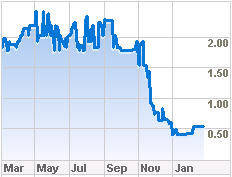
In early 2005, online music business ARTISTdirect saw its stock being traded at just a cent. Then in mid 2005, it paid MediaDefender founders, Randy Saaf and Octavio Herrera, $43m for their anti-piracy company and the stock rocketed to beyond $3.00. Smiles all round – but not for long.
In September 2007, disaster struck. MediaDefender had gathered many enemies due to their anti-p2p activities. One of them decided to teach the company a lesson by hacking into their systems and leaking their internal emails and closest secrets to the Internet. The effect on the company and its operations was dramatic.
Within days, seemingly everyone knew about the MediaDefender leak and inevitably, news started filtering through to MediaDefender’s customer base. With the company’s secrets out in the open, and its operations virtually shut down, people started asking if it was possible for the business to continue and if it did, how effective could it be? MediaDefender’s customers weren’t happy, and the company was forced to issue $600,000 in credits to them by way of compensation for a total lack of results in the 3 months following the leak. But this was just the beginning.
In a SEC filing, the financial damage started to become clear. As a result of the hacking, by November 2007 MediaDefender had lost a massive $825,000 – and growing. Before the email leak, stock was around the $2.25 mark. Three months later in December 2007, things were starting to look bleak as stock plummeted to $0.63.
With the stock sitting today at $0.51, ARTISTdirect needed to take some drastic action – and they have, calling in Los Angeles based financial services company, Salem Partners LLC, to try and sort out the mess. Salem Partners are to explore “strategic alternatives” for the business (which is currently $30m+ in debt), such as restructuring, merger or sale. For this service they will be rewarded well: Salem are on a $50,000 a month retainer for the first 4 months with numerous six and seven-figure bonuses woven in to the rates, dependent on the deals they manage to do.
They could decide to sell MediaDefender off as a separate entity, so it’s possible that Randy and Octavio would like to buy their old business back. One thing is certain – it won’t fetch anything near the $43m they sold it for. The pair currently pick up $350k a year each at MediaDefender so they’re not quite at rock-bottom yet, but would they even want it back after last year’s disaster? Time will tell.
Potential buyers will probably choose to wait a little. According to a source, ARTISTDirect’s current FORM 10-QSB financial statement is not online, but it should have been posted to SEC by Feb 14th 2007 March 31st 2007. Looks like the worst of the financial pain hasn’t even been reported yet.
Update: A comment from a TorrentFreak reader who wanted to correct the above date:
“Most companies have financial years that end 12-31, and quarters that end 3/31, 6/30, 9/30. You file 4 reports about financials (at a minimum) per year. A quarterly report is called a 10-Q, a yearend report is called a 10-K. The forms they are filing are 10-QSB and 10-KSB, with the SB meaning small business, however they are still governed by the same rules and regulations.
Here is where it gets tricky, there are 3 types of filers. Large Accelerated, Accelerated and Non-Accelerated. Your Large Accelerated are your big boys, Ford, GE, Coca-Cola, etc, they have a market capitalization of over $700Million US. Accelerated are companies you’ve heard of, but they aren’t that big. Market capitalization of between $50million and 700million.
Non Accelerated is everything under 50million. To be filing a 10-QSB/KSB, you have to be Non Accelerated by default. So anyways, a non-accelerated company has 45 days after the end of a quarter to file a 10-Q. If their financial end of year was 6/30, their 10-Q would have been due February 14th. However, this time of year, it’s time for a 10-K, because their financial end of year is 12/31. A Non Accelerated company gets 90 days from end of year to file a 10-K. All of this means, they are due to file a 10-KSB by March 31st.”
The Pirate Bay finally got what they hoped for.






